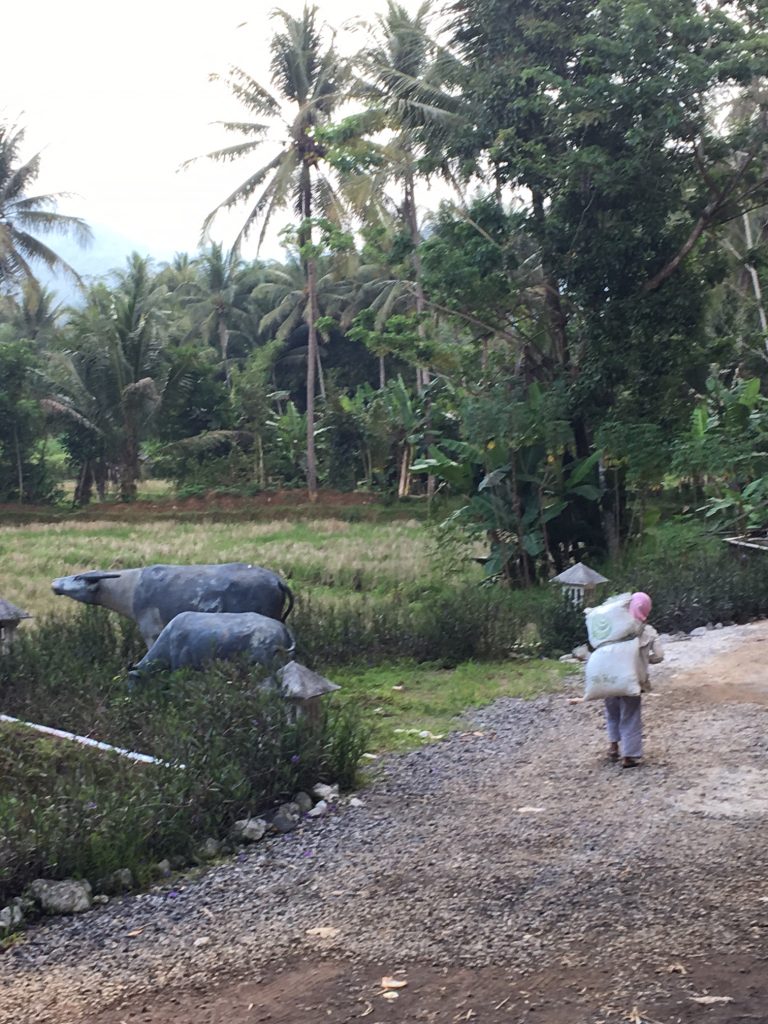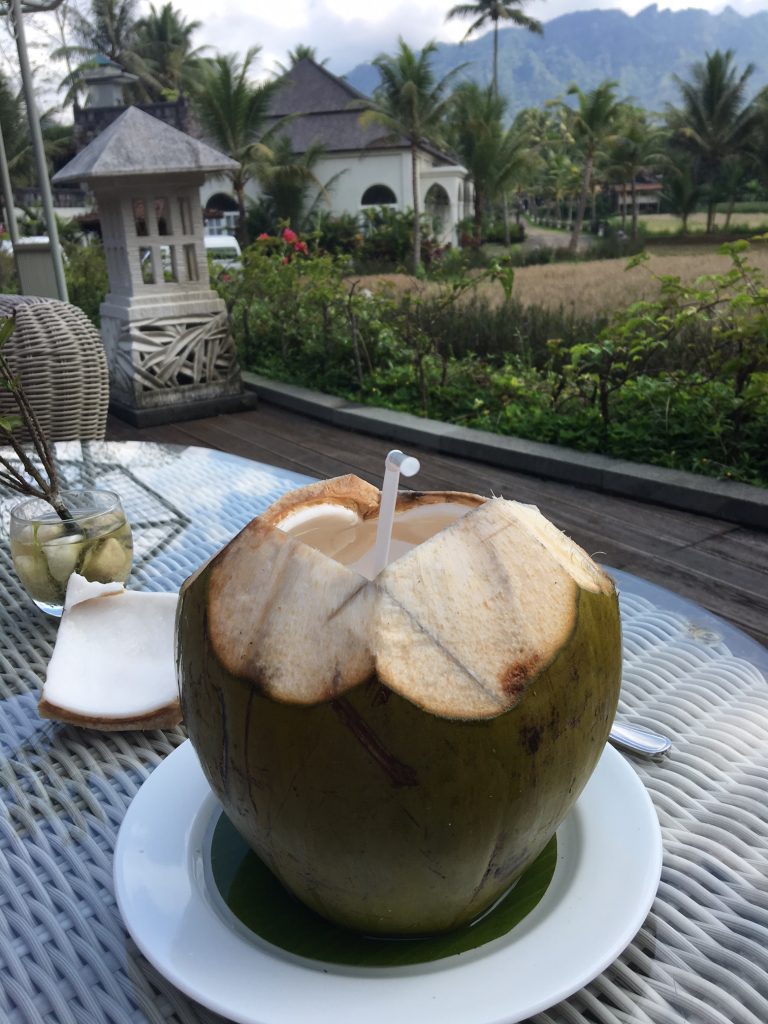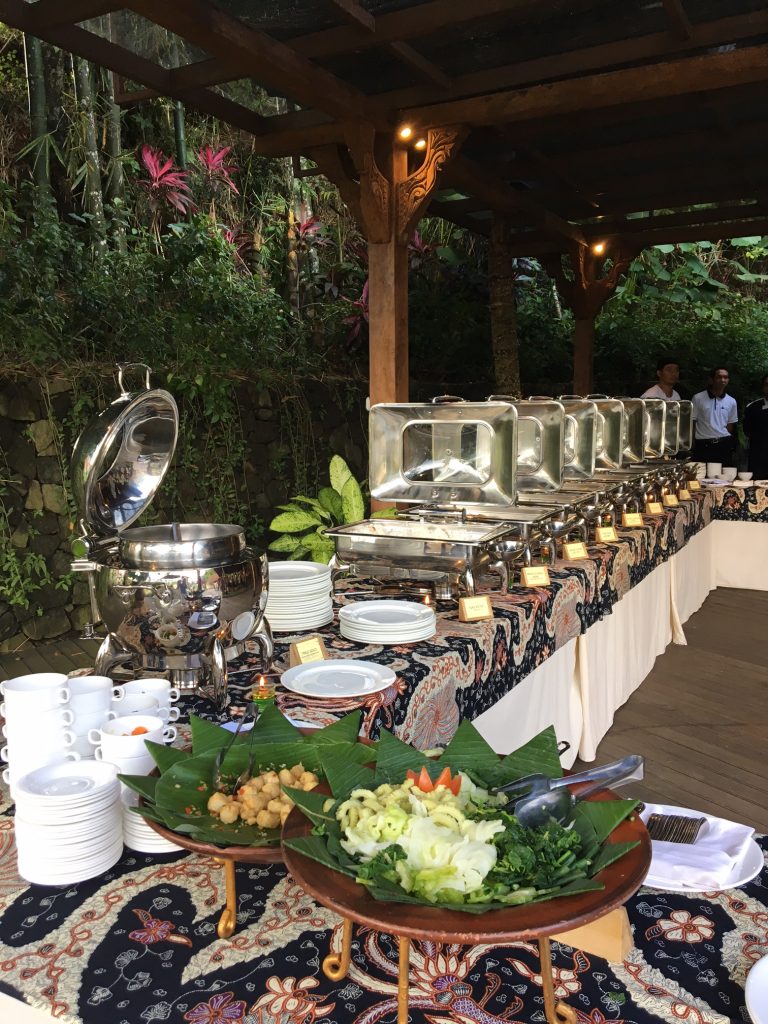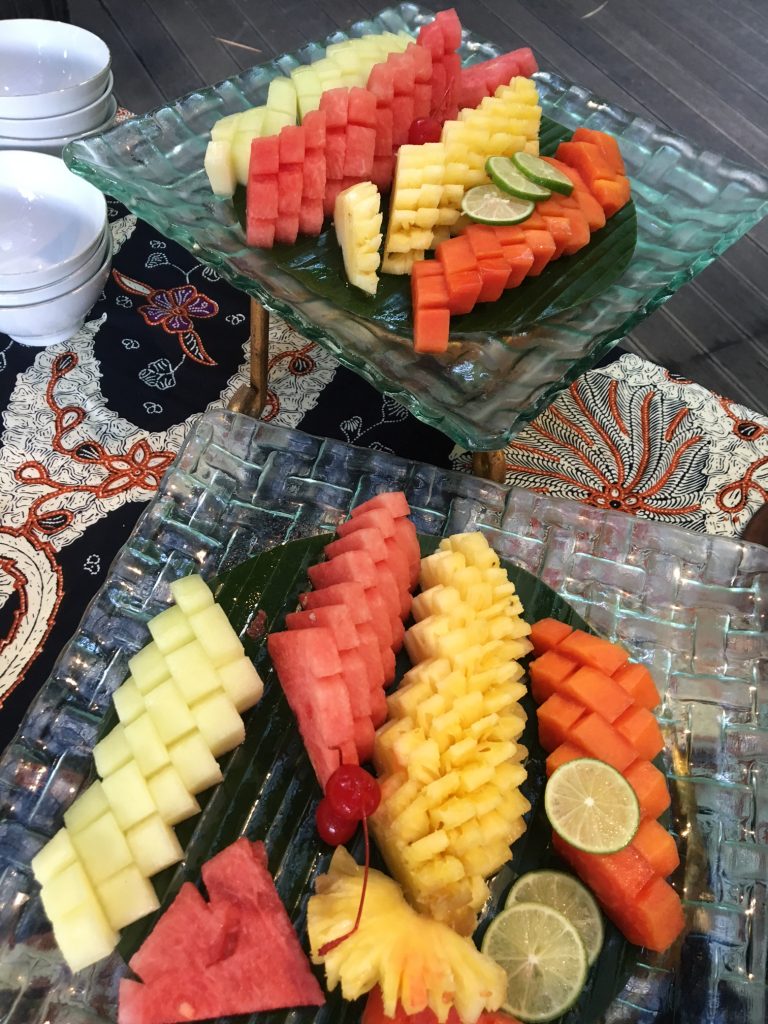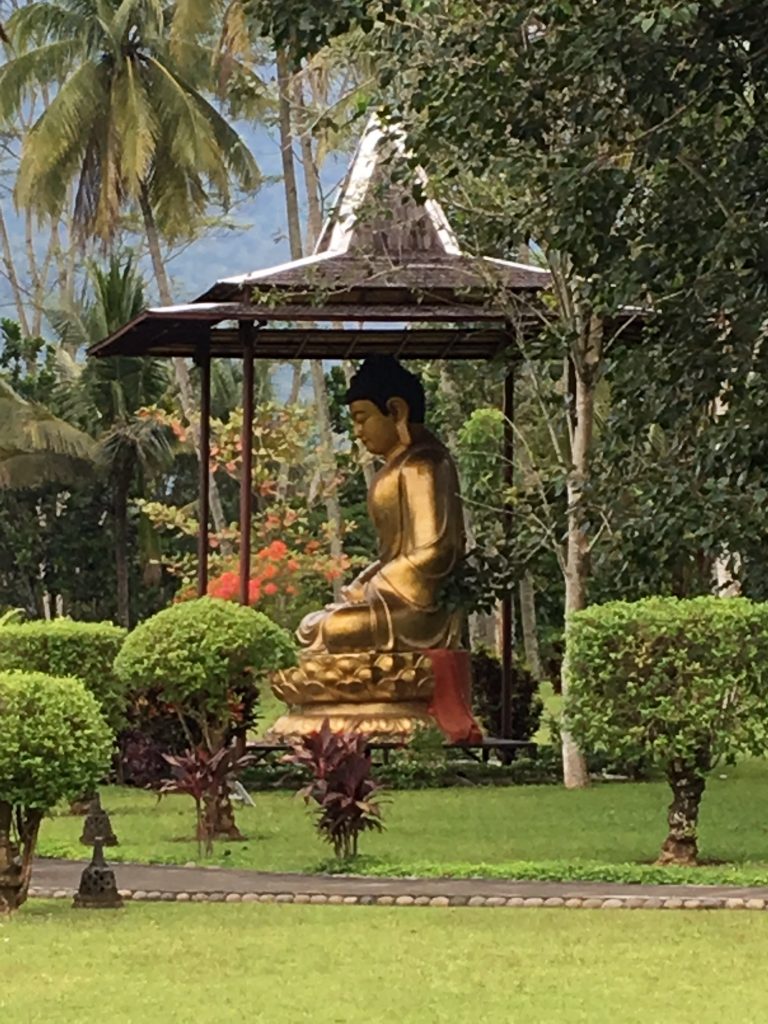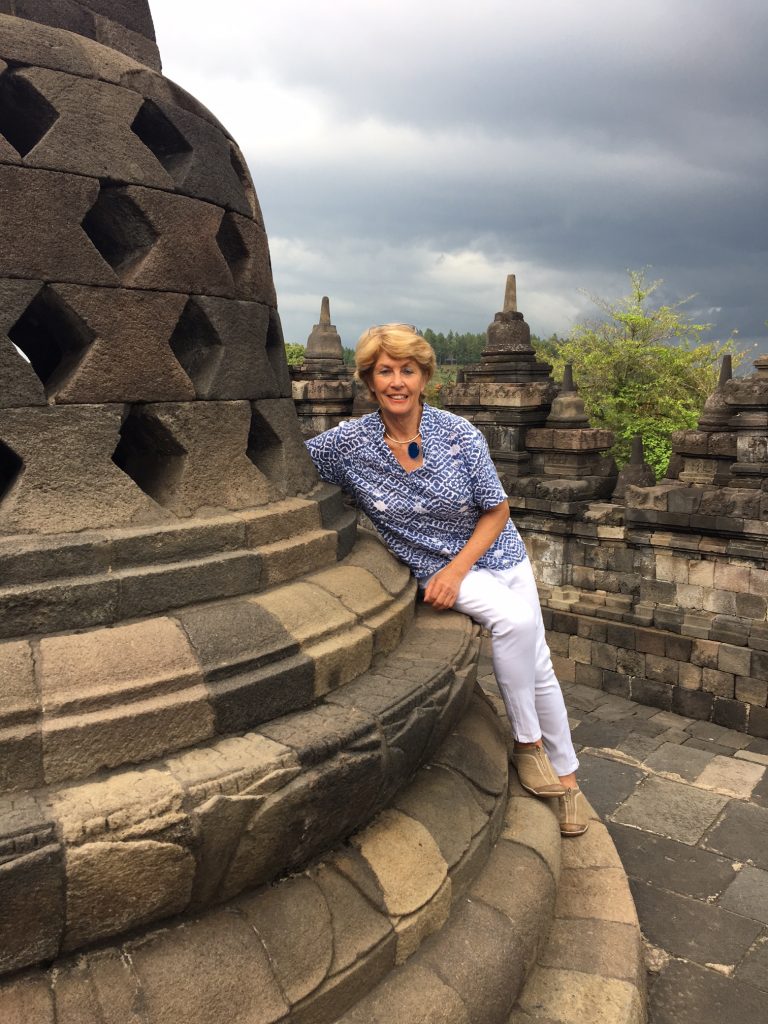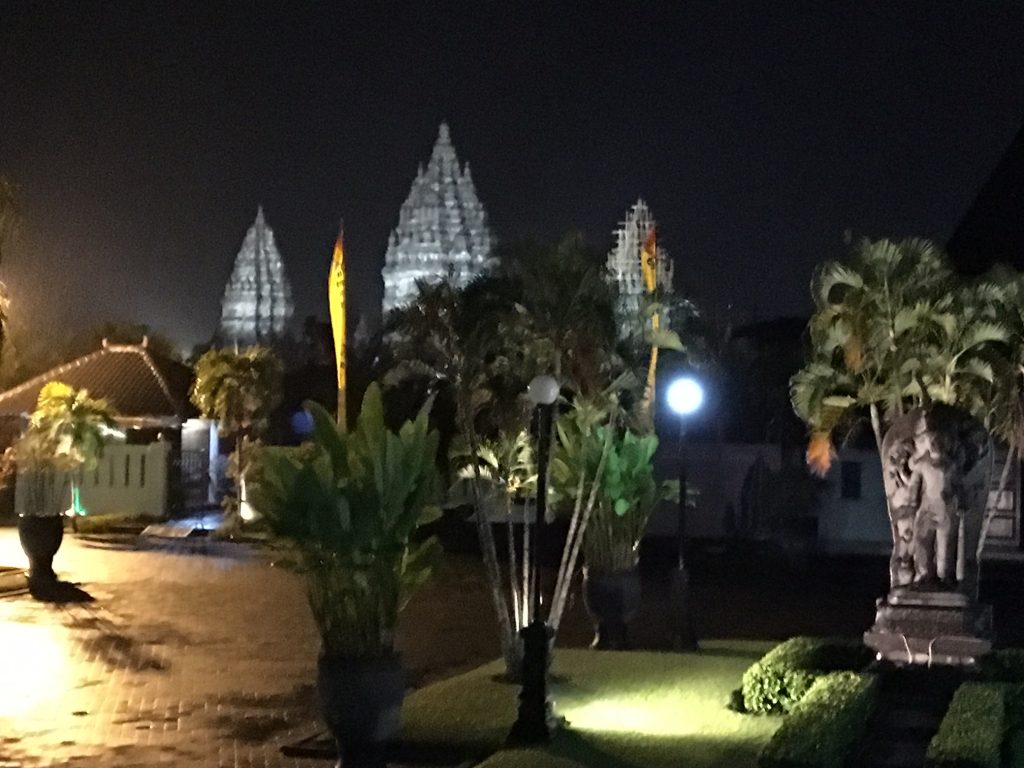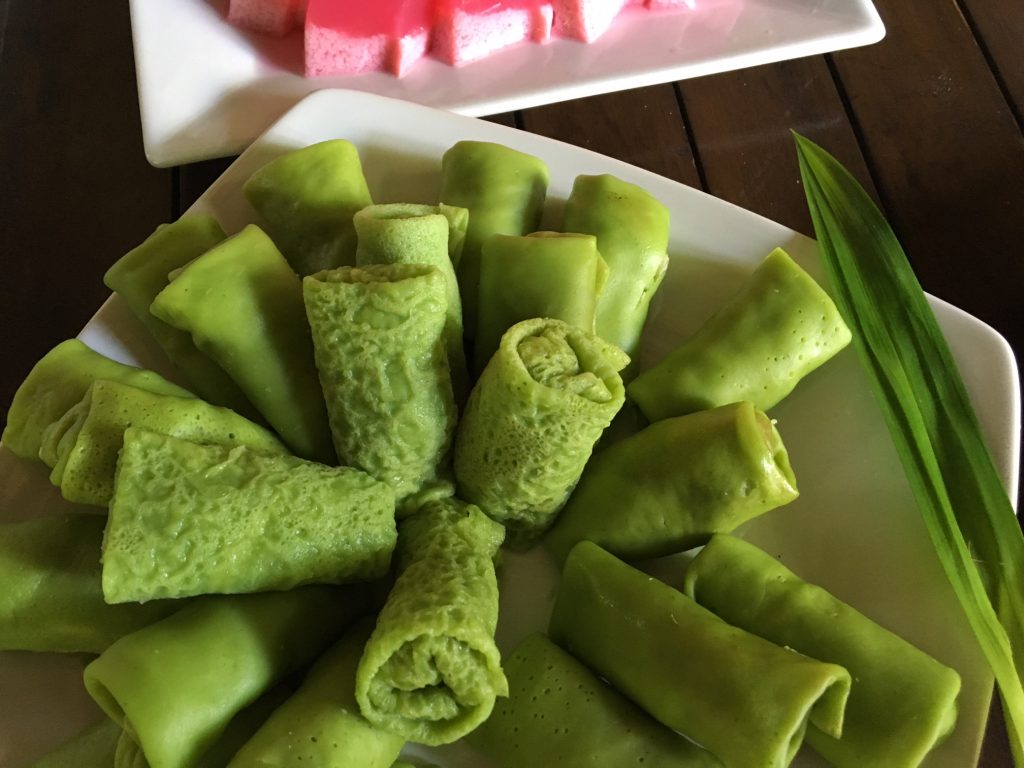Yogya Delights
It’s mid-morning by the time we leave the Sultan’s Palace in Yogjakarta and head out of town.
Driving through the busy streets of this bustling university city of three and a half million people in Central Java, Indonesia, is no easy feat and I’m relieved it’s not me who’s driving.
Even though we’d arrived early at the Palace, it was awash with school children and tourists and I’m more than happy to be leaving the crowds behind.
The plan is to stop for lunch at the Stupa Restaurant before visiting Borobudur, the ninth century Buddhist temple masterpiece, about an hour’s drive from the city.
Slowly the noisy billboard-lined streets and motor bikes transform into peaceful rice paddies interspersed by plots of corn, cassava, tobacco and chilli peppers.
A large rural precinct surrounds the temple. Sixty per cent of the people around here are poor farmers who own their rice paddies and live off the fertile volcanic soil. Grains of rice are being dried on hessian bags in sleepy villages. Bright coloured roosters strut across the road and we’re delayed a few times by slow-paced dokurs (horses & cart).
We miss the turn-off to the restaurant and have to double back.
Set on an attractive terrace with sweeping views of rice paddies and palm trees through to the Menorah Hills, the Stupa Restaurant is run by Plataran, an up-market Indonesian hospitality group.
A buffet lunch has been prepared by the hotel chefs. For me, it’s one of the highlights of our FEALAC tour. The friendly, smiling chefs stand proudly behind a table lined with batik tablecloths and gleaming silver tureens.
I start with Timlo Solo, a traditional light clear soup from the nearby town of Solo with chicken and vegetables, though this one was without the liver and gizzards.
There’s a stunning Pecel Kretek (the Javanese version of Gado Gado, Indonesia’s famous vegetable salad served with a tasty peanut sauce), Bihun Goreng Ayam (fried rice noodles with chicken), Sayur 7 Rupa (7 Vegetables), Telur Dadar (fried eggs), Sambal Goreng Ati (fried chicken livers with potato), and a colourful, delicious Ayam Dharmawangsa, a specialty of Yogyakarta which is made with shredded young mango, chicken, red onions, carrots and capsicum.
For dessert, freshly sliced tropical fruits served with Es Dawet, a fabulous iced drink of glutinous rice, coconut milk, palm sugar and jackfruit. It’s so good that I drink it from the bowl.
Central Javanese food is sweet and spicy and coconuts are used extensively, and not just for their flesh. The coconut water is drunk from the shell, the leaves are used to enclose sticky rice and coconut oil and milk are by-products. The heart of the coconut palm is also eaten, and the fibre used for brooms and mats.
I’m reluctant to leave but we’re running late for our tour of Borobudur. Fortunately our guide has tickets which allow us to enter through the glorious, well-tended gardens of the Manohara Hotel.
The climb up is not too steep and we pause to look at the friezes on each level which narrate stories from Buddhist literature in both high and low relief. The lower levels tend to be more sensual, the higher levels more ethereal. A large cupola crowns the top and is encircled by stone Buddhas, some of which sit inside their own cage-like stupas. To reach through the cage and touch the Buddha inside is said to be a quick path to enlightenment. I take a deep breath and reach in.
The views are panoramic. Lush, vivid green, tropical vegetation surrounds the monument while in the distance looms Mt Merapi, the fire mountain, which last erupted in 2013. It’s just one of several active volcanoes in the area.
Today its summit is shrouded in cloud. “Malu malu kucing,” comments our guide. “Merapi is feeling shy as a cat today.”
I just wish that the noisy school girls in hijabs had taken note. They’re anything but shy and keep asking me to stand in photos with them and practice their English.
Thank goodness they’re not so numerous at Prambanan, the magnificent Hindu temple complex which we visit the following day.
Despite the torrential downpour the previous night (which unfortunately cut short our visit to the outdoor Ramayana dance spectacle), there’s no sign of flooding on this steamy morning.
Before our visit, we’re taken to lunch at Kali Opak, a delightful restaurant situated on the Opak River. The owner-chef, Suryadi, is very welcoming and says he opened the restaurant in 2002 to help the young people in the area learn hospitality skills. The locals call him a wali (guardian).
“The most traditional Central Javanese dish is gudeg, made famous by the Sultans,” he tells me. “It’s a curry of young jackfruit made with coconut sugar and coconut milk and cooked for 2 -3 hours until it becomes black, similar to rendang. It has a sweetish savoury taste.”
I find out later that Yogyakarta is sometimes nicknamed Kota Gudeg (City of Gudeg).
Sadly it’s not on the menu today, but there’s another dish – trancam – which takes my fancy. Basically it’s a fresh, spicy salad of cucumber, long beans, bean sprouts and peppermint leaves dressed with young coconut, chilli, kencur, garlic sugar and salt.
And for dessert, the dadar gulung – crepes flavoured with pandanus and filled with crushed sticky rice, coconut sugar and coconut milk – are outstanding.
Their delicacy and sweetness reminds me of some of the young female Ramayana dancers on stage the night before.
We spent just two days in and around Yogyakarta. As with the dancers, I felt I’d barely glimpsed its many delights and would set aside a week or two next time to further explore its rich cultural history and natural wonders.

